National Works Yard, Vancouver, LEED Gold |
|
x |
| Advanced
Case Studies in Sustainable Design |
Terri
Meyer Boake B.E.S. B.Arch. M.Arch. |
National Works Yard, Vancouver, LEED Gold |
|
| Understanding the Sustainable Potential of Steel: |
The steel industry is very aware of the need to reduce CO2 emissions and avoid the depletion of our natural resources. Involved in recycling and reuse initiatives since the turn of the century, the steel industry has reduced its energy consumption on several steel processes and its CO2 emission by more than 20% since 1990. Great efforts are being made to create and understand the sustainable potential of steel. The selections below will give you more industry and institute specific information about the general "greenness" of steel. Since HSS steel tubes are manufactured using plate steel, this information is relevant to the choice to employ HSS in your architectural project. Measuring the sustainability of the steel used in a project can be based on three premises: • how
much of the steel is derived from recycled content? Steel can be reused from project to project. For more information on reusing steel, please visit: www.reuse-steel.org |
| Image
Gallery Links: |
Building Name, Location: | Masters
Level Research PDF Links: |
Undergraduate
Level Research PDF Links: |
| Residential Buildings: | Masters
Level Author and Links: |
Undergraduate
Level Powerpoint presentation and research essay links: |
|
Stratus Winery Les Andrew
Architect |
web
article 1 First LEED Canada Silver |
||
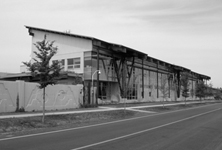 |
City of Vancouver National Works Yard Omicron Architecture Engineering Construction Services Ltd. |
LEED
Gold web article 1 web article 2 web article 3 |
Elisa Jansen, Rose Linseman, Jessica Liefl, Caroline Howes |
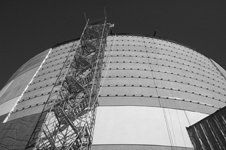 |
Tohu Montreal, Quebec going for LEED Gold |
Rebecca Lai, Sarah Khalid, Ping Pai, Elaine Lui |
|
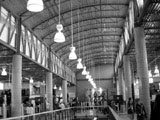 |
Mountain Equipment Coop MTF Architectes |
web
article 1 www.mec.ca-montreal store |
|
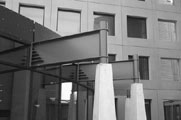 |
SITE IKOY Architects |
Carlos Medina, Joel DiGiacomo, John Williamson, Marianna Decola |
|
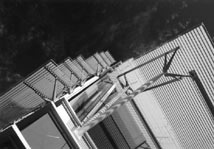 |
APEGBC
Headquarters Busby + Associates, Keen
Engineering |
web
article 1 article pdf |
Evguenia Chevchenko, John Armstrong, Jen Green, Rob Micacchi |
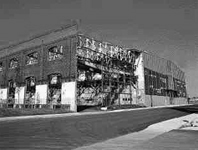 |
The
Angus Technopole Ædifica Architecture
+ Engineering + Design |
article
in Canadian Architect January 2001
|
Elaine Catane, Miriam Ho, Charles Li, Kyle Slote |
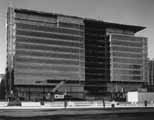 |
Caisse du Depots et Placement: Eric Gauthier Architect, Montreal, Quebec |
||
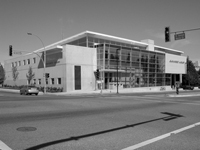 |
Semiahmoo Library and RCMP District Headquarters, Surrey, B.C. Musson Cattell Mackey Partnership |
LEED Silver |
John Lee, Michael Lin, Christina Man, Gillian Tyrrell |
Lillis Business School, University of Oregon Eugene, Oregon |
web article 1 web article 2 web article 3 web article 4 |
||
| Calculating the Recycled Content of Steel: | |
Since one of the main benefits of steel is its inherent recyclability, it is important to understand the differences in recycled content arising from the varied methods of producing steel. The integrated mill produces steel with the BOF (Basic Oxygen Furnace) while the mini-mill's process is based on the EAF (Electric Arc Furnace). The BOF uses 25% recycled steel (up to 35%) and the EAF is fed 90% recycled steel (up to 100%). Adding the post-consumer and half the post-industrial recycled contents will generally provide a 15-20% LEED™ value for a BOF and 75-90% for an EAF. Most North American structural steel, with the exception of some plates and coils, are produced using the EAF. Note that both BOF and EAF processes are needed for a global sustainable environment. The Steel Recycling Institute has prepared a chart illustrating the sources of recycled steel. ...link... "Steel Takes LEED With Recycled Content". ...link...
|
|
| Industry Information: | |
Reusing Steel: The Steel Recycling Institute: The American Institute of Steel Construction: Sustainable Development in the World Steel Industry :: American
Iron and Steel Institute The US Green Building Council: The Canadian Green Building Council: |
|
| Articles on Sustainable Issues with Steel Construction: | |
Advantage Steel: Sustainable Steel Feature Issue Structural Steel Contributions Towards Obtaining
a LEED™ Rating The Real Deal: Sustainable Steel Sustainability and Steel I: Integration A Never Ending Story: The Multiple Recovery Cycles of Steel Recovery Strategies to Bypass the Grave |
|
| Building Case Studies: | |
A Perfect Match Back to School Design for Deconstruction Outdoors Inside Creative Quarters Green Again LEEDing the Way |
|
| Industry Commitment: | |
| Environmental Progress in the Steel Industry USA | AISI The amount of energy required to produce a ton of steel decreased by almost 45% from 1975 to 2001 as a result of technological improvements and energy conservation measures. scinews.steel-sci.org/articles/pdf/SSC.pdf (1.2 MB) link to pdf document |
|